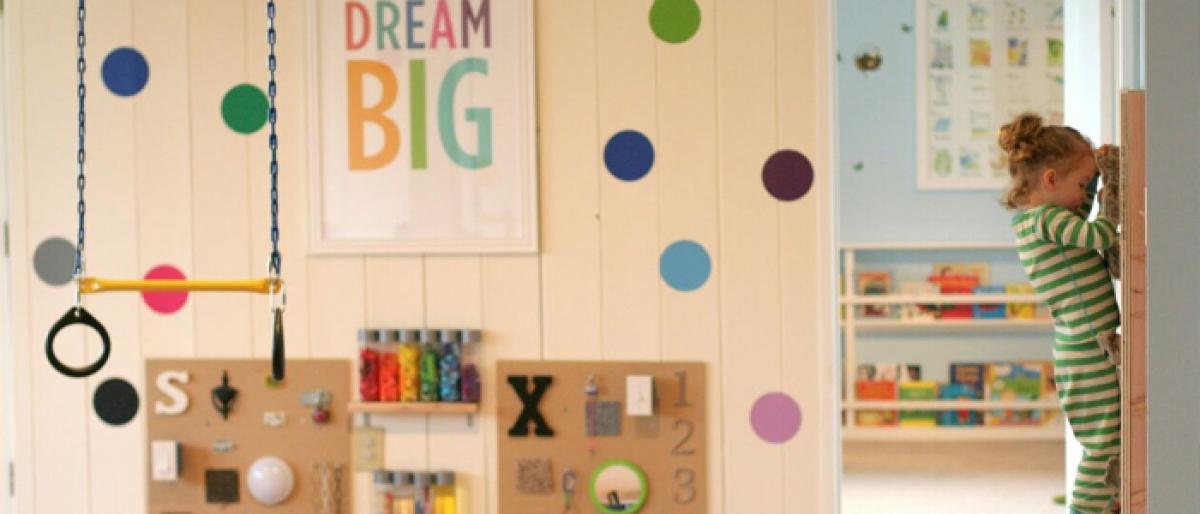Room to grow

Children spend a considerable amount of time at home in their formative years. In this stage of their lives, then, it is naturally this space that plays a crucial role in their growth and development. Their sensory exploration at this time fosters their linguistic and cognitive development as well as stimulates creative growth in them. The best way to fuel their imagination and boost their interes
Children spend a considerable amount of time at home in their formative years. In this stage of their lives, then, it is naturally this space that plays a crucial role in their growth and development. Their sensory exploration at this time fosters their linguistic and cognitive development as well as stimulates creative growth in them. The best way to fuel their imagination and boost their interests in this crucial period is to incorporate simple décor features at home and to keep the space clutter-free.
Most of the kids live in a fantasy world that is replete with fairy tales and superhumans. They do not like any restrictions to their imagination and are eager to express themselves freely by scribbling, drawing or colouring on the walls or any smooth surface. It is imperative, therefore, to design your house in such a way that allows your child to bring out his/her creative genius.
Scribbling is one of the essential building blocks in their healthy learning and development and it shouldn’t be restricted. You can use easy-to-clean washable paint for the walls so that stubborn stains can vanish off them easily.
Further, it is advisable to use vibrant colours in pastel shades such as yellow, blue, green and orange to make the room look bright and welcoming. The use of chalkboard paint on a particular wall or a whiteboard set-up can enable kids to enjoy their ‘scribbling’ time.
These days, chalkboard paint comes in a variety of colours, which means parents can choose a paint that goes well with the décor of the room. Incorporating washable laminates for wardrobes is another supporting material to further stimulate activity in kids.
While designing the kids’ room, introduce unconventional shelves that come in different shapes and sizes, rather than the conventional square and rectangular patterns. A curved shelf crafted in the shape of a bookworm, a Ferris-wheel bookshelf or floating shelves in playful designs and patterns can boost your kid’s imagination and make way for the development of visualisation.
Kids learn in a variety of ways. Certain sounds are known to activate their responses and promote learning in them. For instance, the soothing sound of a windchime can comfort them. Even affixing a beautiful, wooden abacus can enhance the room décor as well as allow them to learn counting and math in a fun and engaging manner. The use of simple craft materials that focuses on sensory aspects is good to stimulate your child’s creative skills.
Children love to touch and feel whatever they come across. Instead of asking him/her not to touch anything, allow them to touch, smell, and taste the world around them. Try and incorporate kid-friendly fabrics for upholstery, curtains and the bed. Avoid the use of textures on walls and use as many different fabrics so that your child understands and learns the difference between hard and soft objects from touch.
If you want your little one to function independently in his or her own space, then you need to make that space accessible for your child. Try to make his/her room as flexible as possible with kid-friendly furniture and objects. Consider replacing heavy wardrobes with cubbies and use mini bunker beds instead of loft ones. Offer the child a liberal space to grow and make necessary changes in the room as the child grows. Your child will outgrow his/her current preferences in no time, so let them have fun and allow them to enjoy when the time is ripe!
By: Mikita Laad Gupta, Senior Designer, Bonito Designs.















